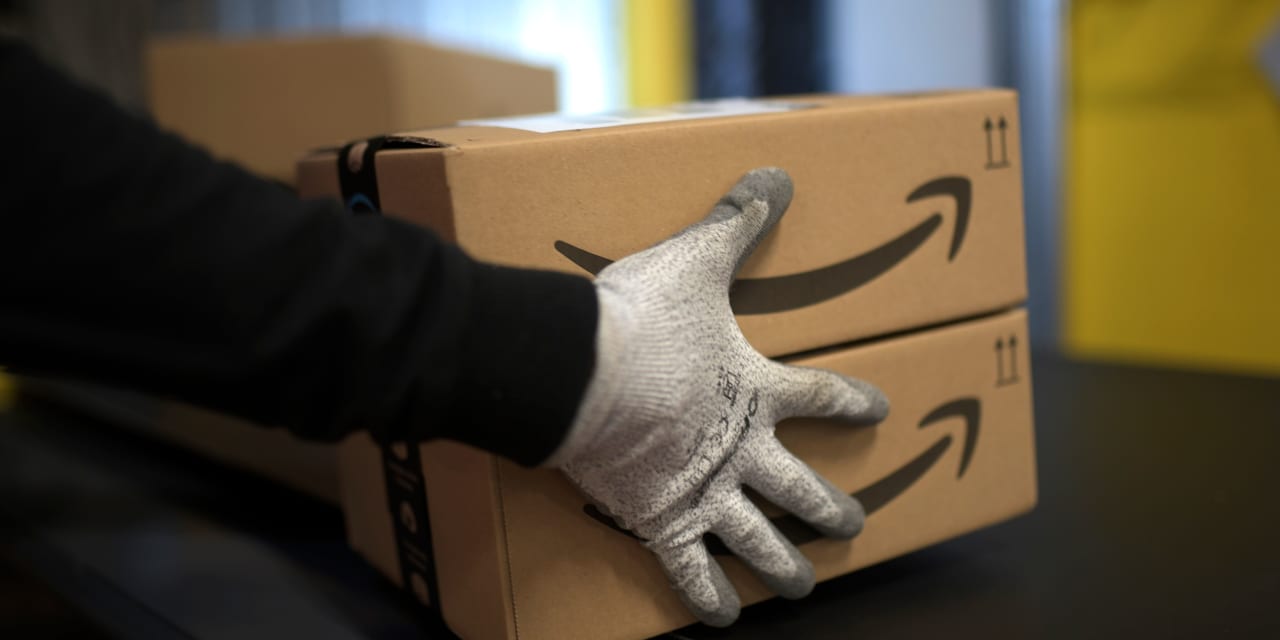Amazon.com
shares have tumbled 15% since mid-September, and the reasons are legion.
There are concerns about weakness in consumer spending, and worries about the impact on delivery costs of rising fuel prices. The stock is being afflicted by both fretting over intensifying competition in online shopping, and the recent Federal Trade Commission lawsuit asserting that
Amazon
(ticker: AMZN) operates an illegal monopoly in the very same market. The company’s plan to hire 250,000 seasonal workers bothers some investors, who see it as a sign of rising costs.
And there are jitters about both the strength of cloud computing demand and the emergence of new competitors. On that final point, the Information reported Tuesday that AI chip supplier
Nvidia
(NVDA) may be planning to accelerate construction of its own cloud data centers to compete with the three leading cloud providers Microsoft Azure, Google Cloud and
Amazon
Web Services.
All of that is going on with the Amazon third-quarter earnings report just weeks away, and with the two-day Prime shopping event coming up next week.
At least two analysts weighed in on the stock Tuesday and suggested investors take advantage of the recent weakness in Amazon shares ahead of earnings.
Mizuho analyst James Lee repeated his Buy rating and $180 target price on Amazon shares, and kept the stock as his top pick. Lee wrote in a research note that checks with the sales channel find that demand for AWS services remained stable after a meaningful improvement in the June quarter. He said early budgeting for 2024 indicates AWS demand accelerating into next year. Lee doesn’t think that interest-rate volatility is going to impact strategic decisions on shifting more computing capacity to the cloud.
Lee added that customers are generally reinvesting recent savings on cloud spending optimization projects into new areas, like testing large language models and migrating data to the cloud.
“We notice that enterprise customers are shifting their priority from cost optimization to data strategy with most customers still under-indexed in the cloud,” he wrote. “We heard that the pipeline was particularly strong for regional banks for accessing the latest risk management technologies in the cloud to limit interest rate risk and the deposit flight they faced in the first half of the year.”
J.P. Morgan analyst Doug Anmuth likewise reiterated his Overweight rating and $180 target on Amazon shares. In a research note, Anmuth reviewed the long list of investor concerns on the stock, noting that the biggest issue was worries about the AWS growth rate. But he was upbeat about the outlook for the cloud service.
“We are encouraged by moderating optimizations, new workload deployment, and easing year-over-year comps,” Anmuth wrote. “We also expect Gen AI to become a more meaningful driver for AWS in 2024.”
On the outlook for retail, he asserted that Amazon’s growth is supported by same-day delivery, greater Prime member spending and strong third-party selection. As for competition, he noted increased reach in online retail from the China-based players Shein, Temu and TikTok, but said most of the risk is at the low-end of the market, while Amazon serves a broad range of customers. He sees the aggressive holiday hiring plan as a sign of strength in the business.
And not least, he thinks the FTC will have an uphill battle in its case against Amazon. “It will be challenging for the FTC to prove that AMZN illegally maintains monopoly power that blocks competition, inflates prices, degrades quality, and stifles innovation,” he wrote. “In fact, we believe AMZN has done just the opposite of that in each case, ultimately advancing e-commerce to much higher levels of innovation, adoption, and service than we otherwise would have seen.”
Anmuth said Amazon remains his best investment idea, and urged investors to buy the stock on the recent pullback.
Amazon was falling 3.4% on Tuesday to $125.06.
Write to Eric J. Savitz at eric.savitz@barrons.com
Read the full article here











Leave a Reply